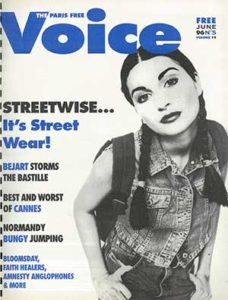 In June 1944, the spirit and visage of Caen were altered forever. June 6, D-Day, was also the beginning of the Battle of Caen, which left some 2,000 civilians dead and 75% of Lower Normandy’s capital in rubble. The city that rose from these ashes has dedicated itself to enhancing its surviving historical monuments, nourishing the arts and sciences and promoting peace. To visit it in June is a poignant experience.
In June 1944, the spirit and visage of Caen were altered forever. June 6, D-Day, was also the beginning of the Battle of Caen, which left some 2,000 civilians dead and 75% of Lower Normandy’s capital in rubble. The city that rose from these ashes has dedicated itself to enhancing its surviving historical monuments, nourishing the arts and sciences and promoting peace. To visit it in June is a poignant experience.
Rather eerily, the Celtic root of its name, Catumagos, means “battlefield.” Under the Romans it was a hamlet called Cadomas, and it stayed a backwater until the ascendancy of those barely tamed Vikings, the Normans. When Caen took the fancy of William the Bastard, its fortune was made. The soon-to-be Conqueror built a castle there, and he and his wife, Mathilda of Flanders, endowed the town with two pearls of Romanesque architecture to atone for their supposed consanguinity (they were distant cousins).
The couple’s expiation, the abbey churches of St. Etienne and Trinité – known respectively as the Abbayes aux Hommes and aux Dames – are masterpieces of the Norman style, built of “pierre de Caen,” a cream-colored limestone that is both easy-to-cut and long-wearing. Thanks to William, the style and the stone would be widely used in England. The oldest part of the Tower of London, for example, is in pierre de Caen, as is Canterbury Cathedral.
The 18th century abbey buildings abutting St. Etienne, now used as the mairie and a nature museum, are full of Louis XV and XVI wainscoting. Free tours, which include the church, are given four times a day, but you can also visit St. Etienne on your own. Note the 1885 Cavaillé-Coll organ, on which recitals are often played in July and August. Before the alter is a stone marking the site of the Conqueror’s tomb, despoiled during the 16th century. Mathilda’s grave is similarly marked, in the choir of Trinité.
Other interesting remnants of old Caen include the Renaissance Hôtel d’Escoville, site of the tourist office (tel: 31.27.14.14, fax: 31.27.14.13) and, through its ornate courtyard, an art exhibition space; two cross-timbered buildings in the rue St. Pierre, one housing a postal museum; the tipsy-looking St. Jean church, whose porch twisted out of shape because it was built on a marsh; and the sunless rue Froide, whose facades hide medieval courtyards.
Near the rue Froide, clinging to the north end of St. Sauveur church off the Place Pierre Bouchard, is a little residential corner straight out of the late Middle Ages. A similar unsuspected treasure is the nearby Passage du Grand Turc off the rue St. Pierre. Better known, and more touristy, is the restaurant-filled Vaugueaux quarter, whose centerpiece is the Michelin two-star La Bourride (15/17, rue du Vaugueaux, tel:` 31.93.50.76, fax: 31.93.29.63).
At the head of the Avenue du 6 Juin, the main north-south artery, is a tower from the old city wall. Running from it to the St. Pierre yacht basin on Sunday mornings is one of Normandy’s biggest markets, with numerous regional specialties: apple and pear cider, Pont l’Eveque and Livarot cheese, tripe “à la mode de Caen,” apple pie and cake, and a hearty, slow-cooked, cinnamony rice pudding called teurgoule. Caen’s département is Calvados, so a purchase of the eponymous apple brandy would be appropriate; Vin sur Vingt in the rue Neuve St. Jean, just off the Avenue du 6 Juin, has “calva” young and old, as well as pommeau, a calvados-cider mixture.
The 90-hectare marshy green space called the “Prairie,” a feature of central Caen since time immemorial, is the site of France’s most important harness racing track after Vincennes (tel: 31.85.42.61) – but it’s also a bird sanctuary, crossed by a stream, with reeds and a pond at one end.
If you are in town long enough, take the city bus marked “Memorial” to the outskirts of Caen and visit the “museum for peace.” The Memorial, in a striking modern building of pierre de Caen, combines multimedia and other displays that not only chronicle D-Day and the Battle of Normandy but set World War II in context as an inevitable outcome of World War I and a source of valuable lessons about the struggle for peace. To absorb it all takes an entire, emotionally draining day (63F, free for veterans, tel: 31.06.06.44). A special exhibition, “1945: la violence d’un siècle,” mounted by the Hamburg Social Research Institute, runs to September 30.
For another excursion, cruise Caen’s canal from the Bassin St. Pierre to the Channel harbor of Ouistreham, 14km away, on the Hastings, a panoramic boat (about 2.25hrs round trip, 50F/38F, tel: 31.34.00.00, fax: 31.34.00.55).
The city has long been a sponsor of William Christie and his Arts Florissants troupe, which performs frequently in Caen; June 5-6 they give a concert of Grand Motets by Mondonville at the former Jesuit church of Notre Dame de la Gloriette (tel: 31.30.76.20, 110-150/90-130F).

